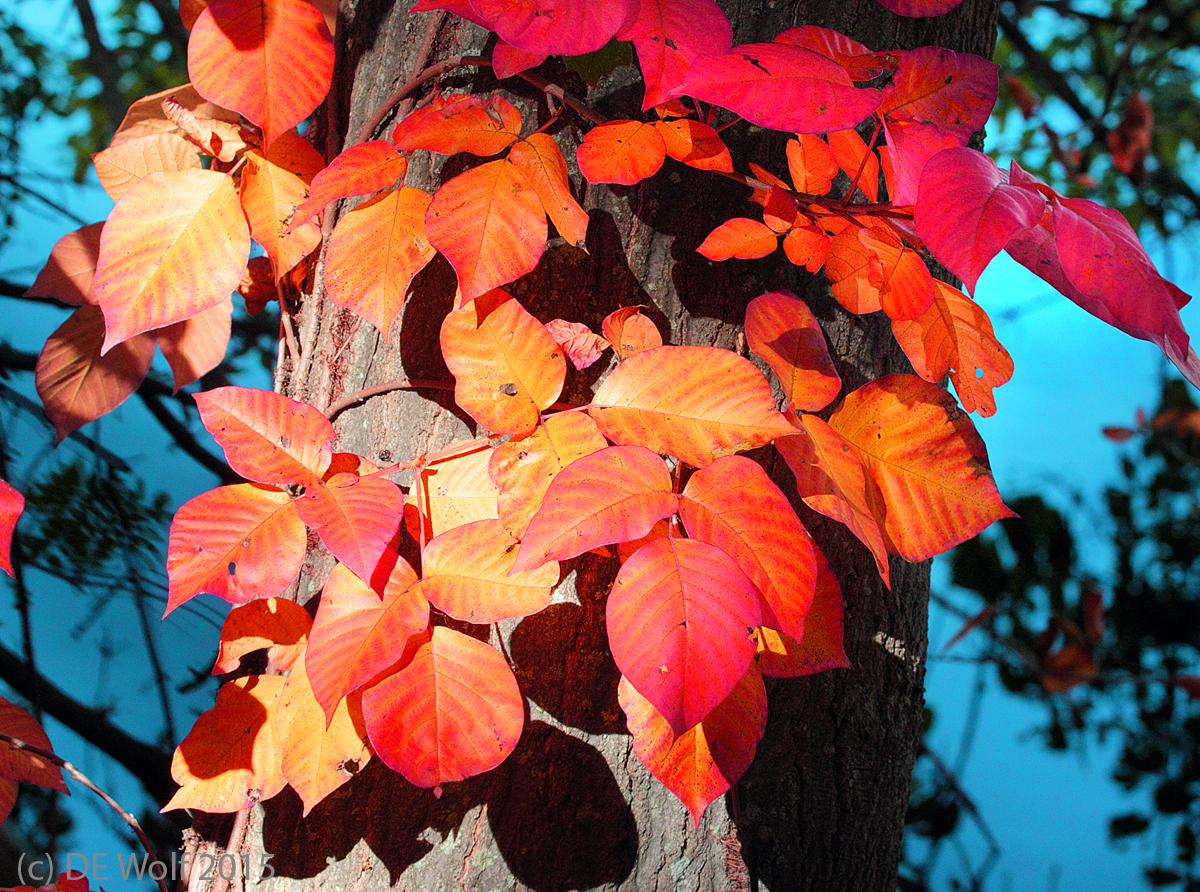As I mentioned last week, the reds are key to fall color and some of the first reds that we see are the poison ivies. It’s almost startling just how much poison ivy there is. It is everywhere. I found a particularly well-lit bunch this afternoon, which contrasted very nicely with the water of the pond. This is by the Glacken Slope and is shown in Figure 1. These leaves are a combination of reds and oranges, as if they cannot quite make up their minds.
It is always interesting to encounter not only something beautiful but also to mentally encounter the associations that it conjures up. I cannot see poison ivy without remember reading, as a post doc, a discussion in Herman Eisen’s “Immunology” about the “fact” that native Americans ate poison ivy to cause themselves to become immune. Don’t try this at home, and let me explain with Eisen’s own words (please excuse the scientific lack of word mincing):
“Recently a similar approach, refined by feeding the purified catechol responsible for poison ivy sensitization, has been found to be of dubious value: the presence in feces occasionally produces in sensitized individuals an unusually severe perianal contact dermatitis, once referred to as the “emperor of pruritis ani.””
I have written in the margin the word “ouch.”
It should finally be noted that domestic goats do not appear to suffer from the same problem and in Massachusetts having goats consume you poison ivy infestation is considered to be the ecologically friendly approach.
Canon T2i with EF70-200mm f/4L USM lens at 70 mm, ISO 1600, Aperture Priority AE mode 1/1600th sec at f/9.0 with -1 exposure compensation.

